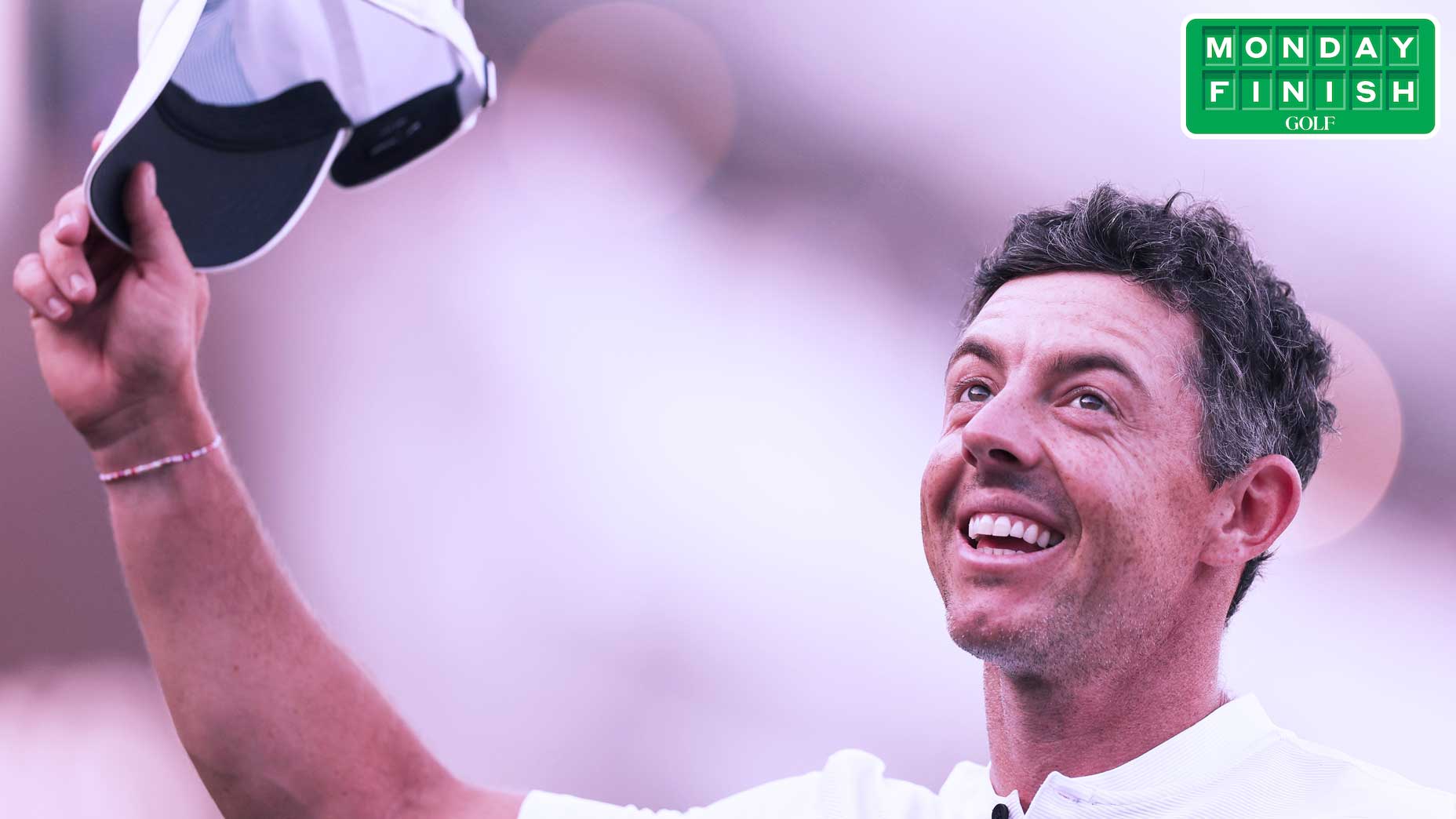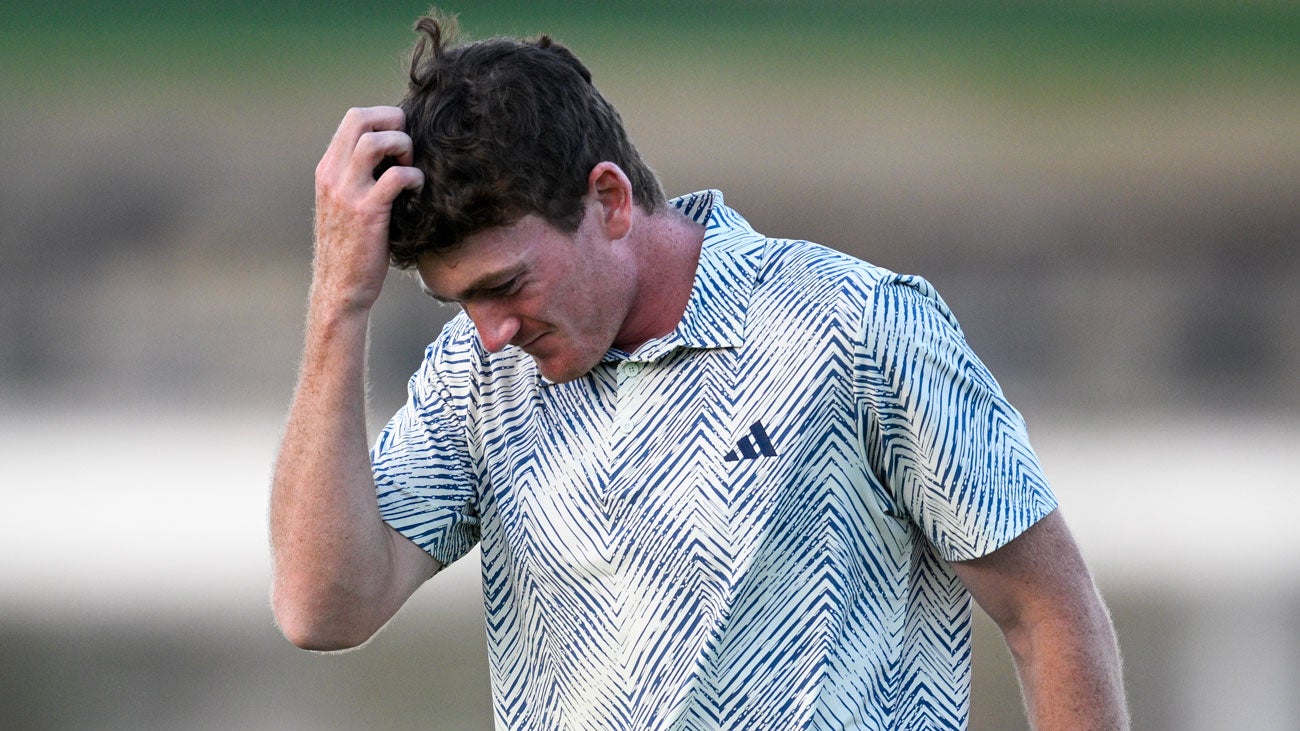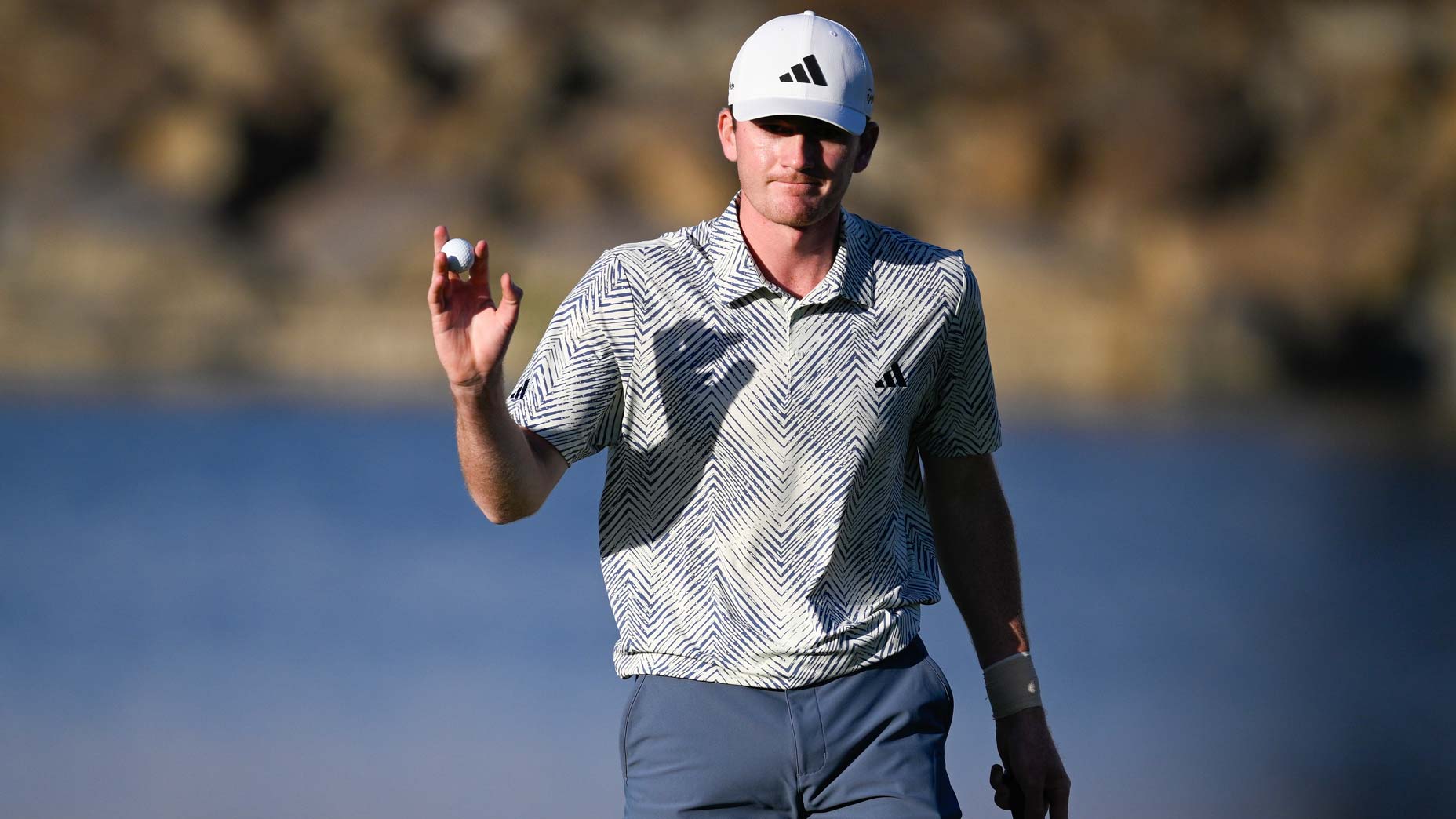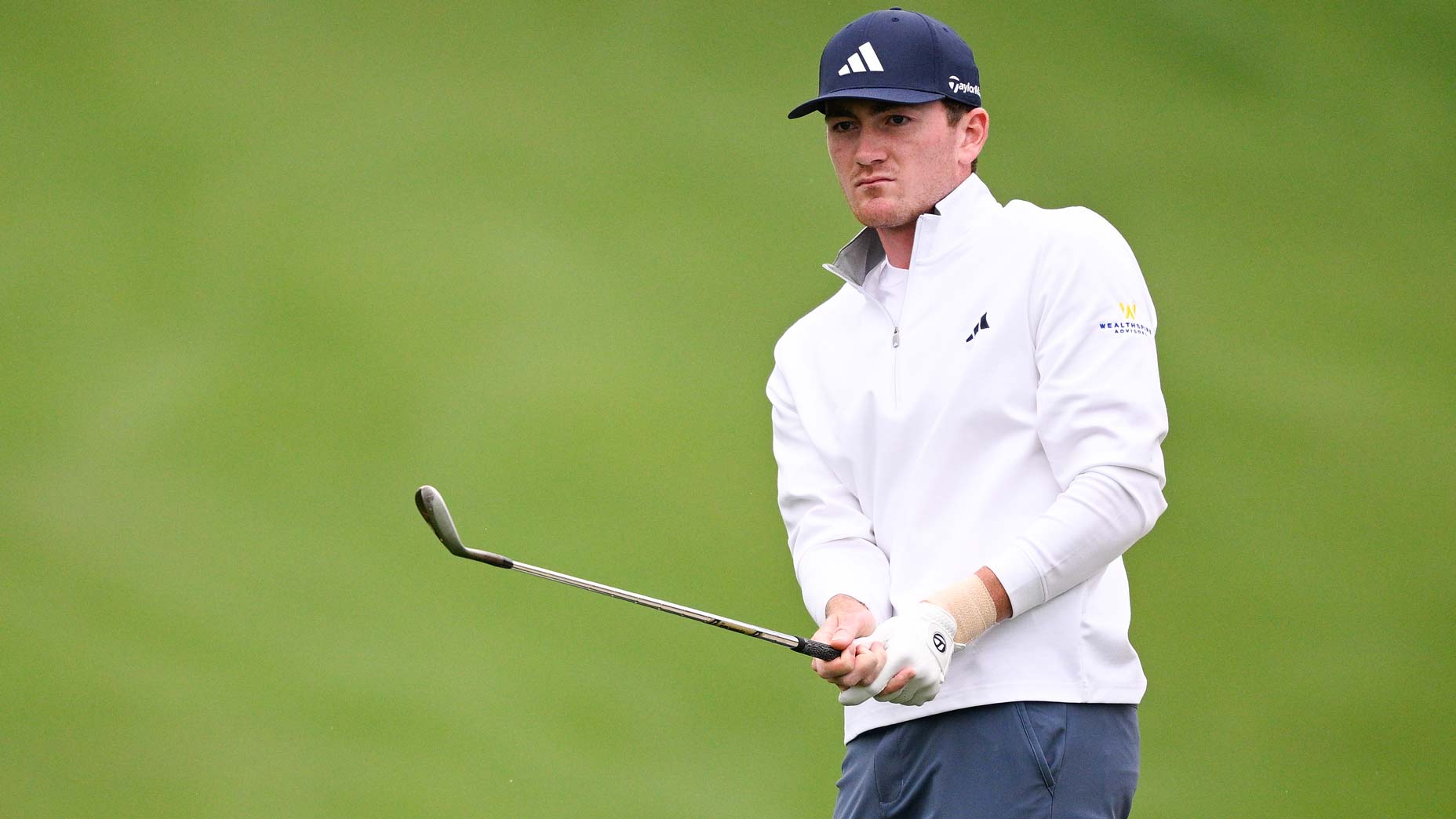Inside Rory McIlroy’s Dubai trip — and competing visions for pro golf’s future
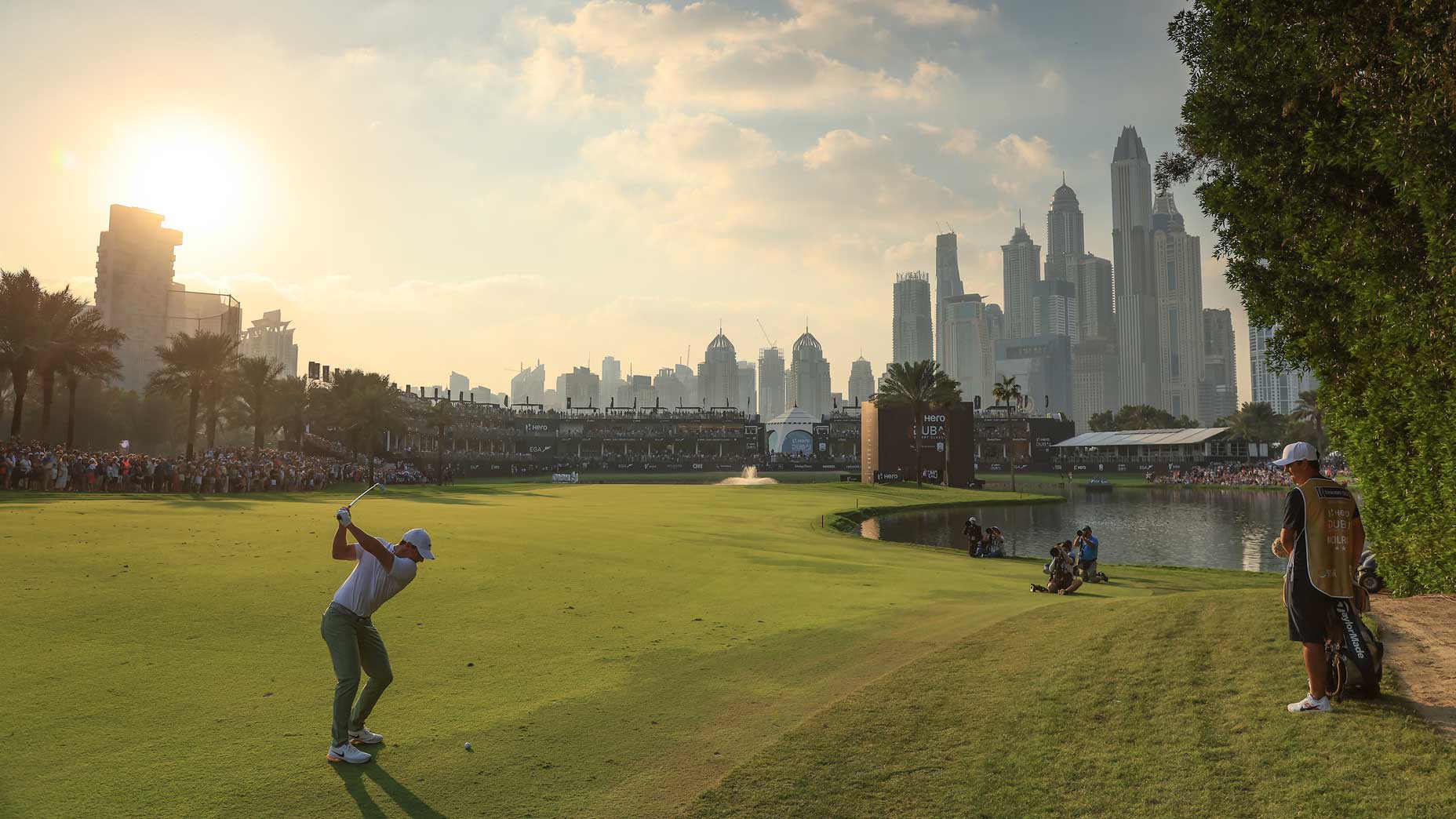
Rory McIlroy hits an approach against the setting sun and the skyline of Dubai's marina district.
Getty Images
DUBAI — There were 8,340 miles between the golf tournaments on the PGA Tour and DP World Tour this week. These days, we’re used to pro golf spread apart. These days, we’re looking for signs of that distance shrinking.
In Dubai, there was Rory McIlroy, asserting the future of pro golf should be a global product unencumbered by one tour versus another tour — a future that would extend to the far reaches of the planet. Something like the Champions League in soccer, a single league that would represent the pinnacle of the sport, collecting the best from everywhere into one place.
In Palm Springs, California, there was Patrick Cantlay talking his responsibility as a director on the PGA Tour Policy Board — and how that responsibility is to the PGA Tour membership. He’s a leader on the biggest tour on the planet, no doubt. But the only tour? Not these days.
Over the last 12 months, McIlroy and Cantlay have been at odds both on the course and off. But both are similar in the sense that they’re leaders during a moment of supreme opportunity. The investment negotiations deciding the Tour’s future have progressed at a slower-than-expected pace largely due in part to the demands of its player directors. They hold a considerable amount of power. Whether they want to soup up the status quo or initiate an international golf revolution is a debate that makes a harmless January week like this past one so fascinating.
In Dubai, they played for $8.5 million. In Palm Springs, $8.4 million. In Dubai there were four of the top 15 players in the world. In Palm Springs, five of the top 15. In Dubai, we saw an event created out of thin air 35 years ago on a course sprouted from the desert sand. In Palm Springs, there’s now 64 years of history, but something quite visually similar — an impossibly lush course in the middle of the desert, lacking only Dubai’s dramatic skyline. At various points in each of their histories, both events have been named the Desert Classic.
But rather than run in parallel, what might this week have looked like if there was just one premier golf tournament? Would it have been better for the game’s bottom line to have McIlroy, Tommy Fleetwood and Tyrrell Hatton playing in the California sun, or for Cantlay, Scottie Scheffler and Justin Thomas to tee it in the Middle East? And when those six all congregate in Orlando for the Arnold Palmer Invitational, would it be better for Jon Rahm, Brooks Koepka and Bryson DeChambeau to join them rather than play that same week in … Hong Kong?
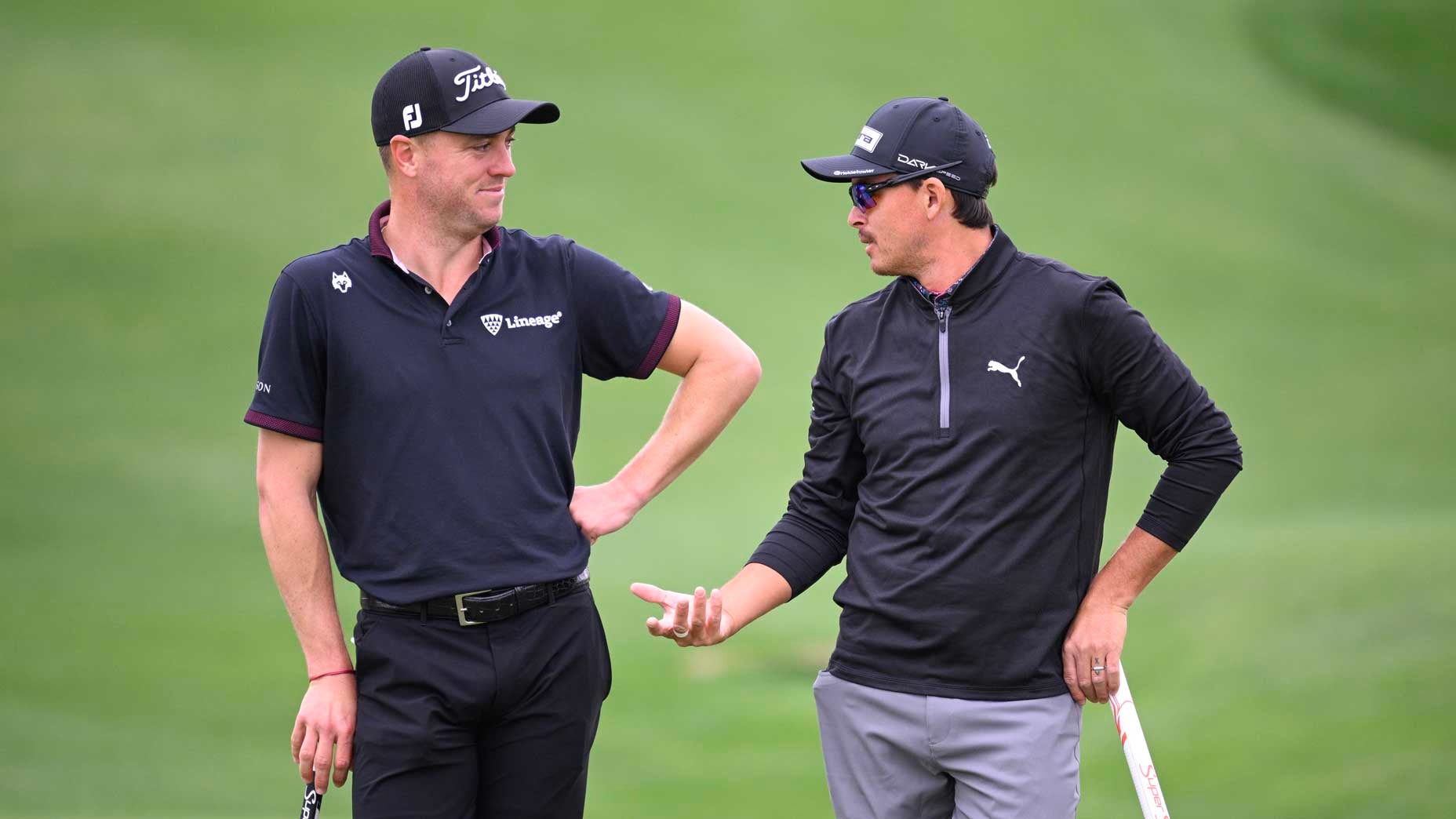
IT MAY HAVE BEEN PURELY COINCIDENTAL that Jimmy Dunne, vice chairman at Piper Sandler and independent director on the PGA Tour’s Policy Board, found himself in Dubai a week ago. The circumstances were familiar — Dunne was one of 60 amateurs at the Dubai Invitational Pro-Am, a hit-and-giggle held for the first time earlier this month. This was a comfy setting for Dunne, who has played in the Pebble Beach Pro-am and the Dunhill Links Championship numerous times and serves as host of the famed Seminole pro-member. The man knows pro-ams.
The context surrounding Dunne’s appearance is nonetheless difficult to ignore. This was his first visit to the Middle East. It comes during the latest round of negotiations between the PGA Tour and the Saudi Public Investment Fund (headquartered in nearby Riyadh), which were initially brokered by Dunne himself when he became an early conduit for communication between PGA Tour commissioner Jay Monahan and Yasir Al-Rumayyan, governor of the Saudi PIF — a duty once considered impossible. At the time, Dunne flew to London to play golf with Al-Rumayyan to feel out the potential for a deal. He is clearly willing to travel for business.
Whether or not this was a business trip, what awaited Dunne in Dubai was an amateur field littered with extreme wealth: company founders worth billions, CEOs of tech companies, luxury real estate developers, aviation moguls and chairmen of private equity firms. The kind of people whose companies spend lavishly on golf, and have been spending lavishly on golf. The “DP World” in DP World Tour is also known as Dubai Ports World, an asset in the holdings of Dubai World, a government-owned investment firm.
During a quick chat over the phone, Dunne said it would be silly to be naive of the wealth that has grown over the years in Dubai, comparing it to the wealth that grew out of Silicon Valley in Northern Califonia’s tech boom.
“I said to Abdullah [Al Naboodah, host of the pro-am], that I was really upset with myself that it took me 66 years to see this part of the world,” Dunne said. “I didn’t even wait until I got home — I called both of my sons and told them ‘You’ve gotta get over here to see what’s going on in this part of the world.’”
What’s going on in this part of the world is a lot of things, but Dunne repeatedly highlighted the can-do nature of the Emirati residents he met. He was so impressed, his eyes opened so wide after his 15-hour commute, that DP World Tour CEO Keith Pelley (also in the pro-am field), volunteered it to reporters a week later.
“We are a global tour,” Pelley said. “It would be a great question to ask Jimmy Dunne, who came to Dubai last week for the first time, and he was blown away. And when Jay [Monahan] came to the DP World Tour championship this year, he was blown away.”
Those two words were a popular choice. On Friday evening, between the 2nd and 3rd rounds of his eventual victory, I told McIlroy I had spoken with Dunne. Before I could get a question out, McIlroy interrupted me:
“Blown away,” he said. Dunne had told him, too.
Maybe that’s the entire idea of Dubai — for visitors like Dunne (and myself!) to be bewildered by what you find at the end of the oil money rainbow in the UAE’s most progressive region. It’s a city that has grown from the desert into one of the 10 most global metros on the planet, a connector between New York and the Far East, or London and Australia. With its bright lights, its impeccable skyline and its wealth on very public display — man made islands in the shape of a palm tree — it feels a bit like if Vegas was moved to Florida’s gulf coast, but with a 3.6-million person economy stretched over just 770 square miles (half of Rhode Island).
Dunne wasn’t interested in talking about the pro game much, more eager to steer the conversation toward golf in general. “Everybody’s working hard. And I’m optimistic about the future,” was all he offered on the state of negotiations. But when asked how the sport is able to impact the world by reaching outward from America, his mind went to a telling place.
“The chairman of Augusta [National], Billy Payne, had a wonderful idea when he thought about the Latin American Amateur and the Asia-Pacific Amateur,” Dunne started. “The idea was to create heroes. Once you create heroes, young people have something to look up to and aspire to. Now, they could be professional players, they could be amateurs, they could be regional players. What he tried to do … was create heroes around the world, and therefore promote the game of golf around the world. He was doing it through an amateur event, but it’s the same thing with professionals.”
“GOLF IS AT AN INFLECTION POINT,” Rory McIlroy told reporters last week. This was mid-week, mid-answer, mid press conference. He had just offered up a tantalizing idea: how cool would it be to bring 80 of the best players on the planet to play a tournament in India?
“If golf doesn’t [embrace global opportunities] now, I fear that it will never do it and we’ll sort of have this fractured landscape forever.”
It’s no surprise that McIlroy has thought a good bit about India, or any of the other locations the PGA Tour has largely shunned in recent years. He had just finished a cheery pro-am with Pawan Munjal, whose family business, Hero Motor Corp., is worth an estimated $880 billion, and isn’t shy about investing in golf.
McIlroy is the game’s most global player, living in Dubai early in his career (on one of those man-made, palm-tree shaped islands) pivoting to southern Florida for most of a decade and now moving back to an older global capital: London. He follows international rugby closer than he does the NFL. His loudest comments this offseason came during an appearance on an international soccer podcast. His analogies for pro golf are rooted in the Champions League and the IPL, that cricket league in India, which didn’t exist 20 years ago but has become the second-most watched sports league in the world. (Apologies, Mr. Goodell.) There’s only one major issue with all of that: Brian Harman would rather talk about the SEC than the IPL.
It has proven tricky to get the America-based PGA Tour — which hosts 85 percent of its events in the United States — its predominantly American membership, and it’s American-dominant Policy Board to think outward. Pelley, the outgoing CEO of the DP World Tour, implied to reporters that the PGA Tour has been reluctant to embrace the idea of a truly global schedule.
“They have heard me say it once or twice,” Pelley said with a smirk.
The America-heavy viewership of pro golf offers a ton of TV value, the contracts of which are signed for as much as nine years at time. Tournament sponsorship contracts are signed for four or five years at a time, locked into place on a calendar that begins in Hawaii, transitions to the West Coast, then Florida, then the American South before gravitating to the Midwest. But what happens when the interest from those American sponsors decreases? Honda pulled out of its tournament sponsorship, a role it played for 42 years. Wells Fargo will not be sponsoring Tour events beyond this year. Farmers Insurance will similarly pull out after 2026. These are the building blocks of McIlroy’s “inflection point.”
The title sponsor in Palm Springs, American Express, must be thrilled with how its tournament played out last week, with amateur Nick Dunlap shocking the world in victory, helping everyone forget that the defending champion, Jon Rahm was nowhere to be found. But also reported last week by Sports Business Journal: AmEx’s CEO said they are happy to remain a Tour sponsor, but has no interest in paying extra to attract the biggest names in the world. It’s very content with its ‘five of the top 15’.
“There’s a reason why we all migrate to America,” McIlroy told me Friday night. “That’s where the biggest tournaments are. There’s a convenience part of it that is really, really appealing. That’s why a lot of us have bases there. But I think the PGA Tour, in terms of America, has reached its capacity and its max. Which is great. They do $2.3 billion in revenue a year. They do really, really well. But I think they’ve maybe hit their limit in America. That’s where, I’m like, you come here…”
He trailed off, but there was plenty of context completing his sentence. The iconic Dubai Marina skyline over his shoulder. An enormous grandstand loomed over mine, the size to which I’ve only seen at major championships and playoff events, a token of significance on its own that implies the best players are playing here. And then about 20 yards away from us, a lineup of dozens of children pushing against the rope line, shrieking his name so shrilly it hurt your ears. They did not scream that way for anyone else. To borrow Dunne’s idea, if there’s a golfing hero in Dubai, it’s absolutely McIlroy.
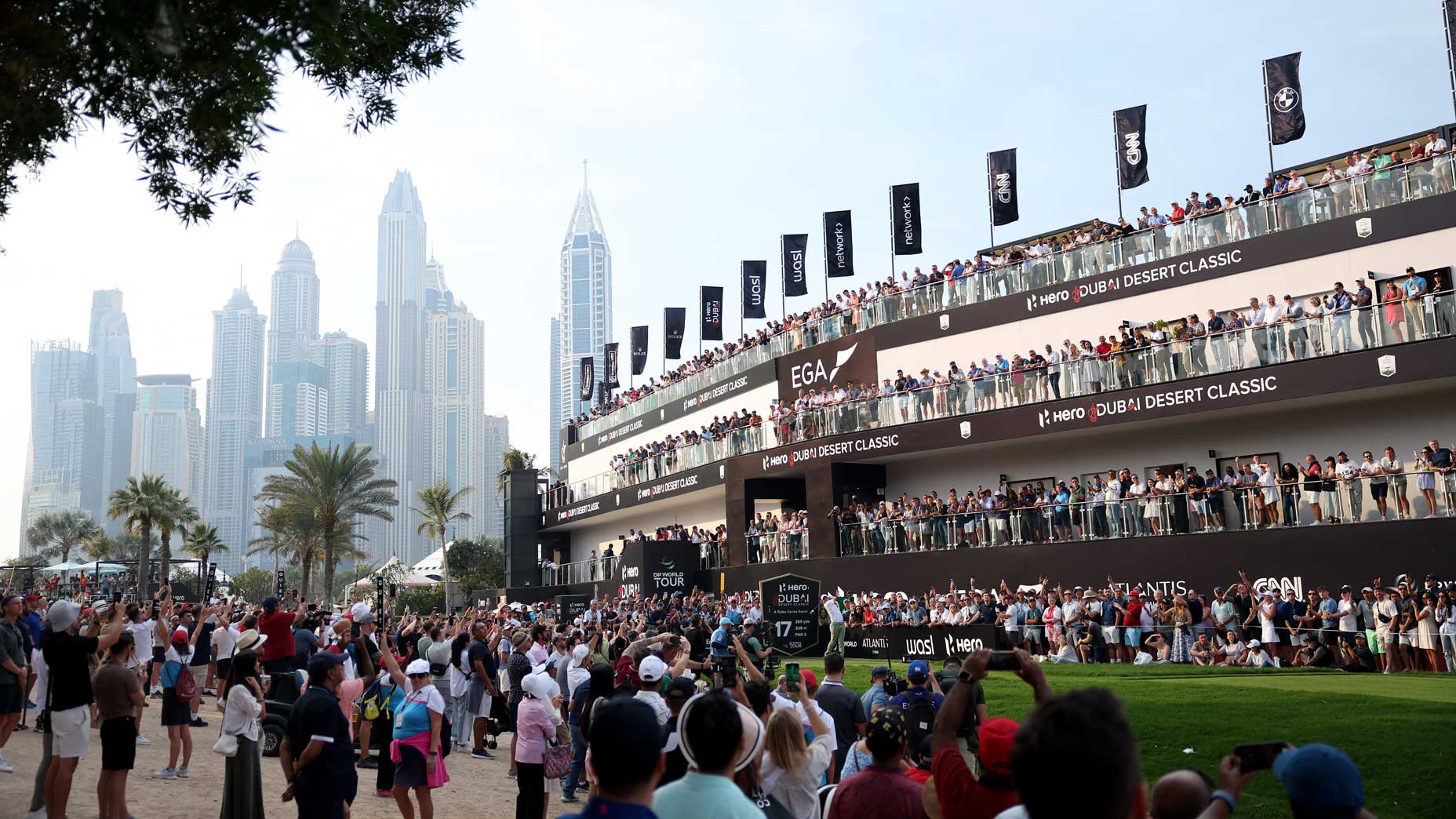
ON THE ONE HAND, AMERICAN EXPRESS WILL BE VERY HAPPY. Or at least the marketing team at American Express should be very happy. How could they not be? Tournament organizers everywhere fill their fields with exemptions like the one that got Nick Dunlap to show up. The No. 3 amateur in the world accepted the invite in the same way the No. 4 amateur, Michael Thorbjornsen, accepted a similar invite to play in Dubai. And about 15 hours after Thorbjornsen finished an impressive T11 in Dubai — these kids are good! — there was Dunlap lifting the trophy in California. It was an indelible moment for the tournament, and a good reminder that, like Phil Mickelson once did at the Northern Telecom Open 33 years ago, Dunlap’s win will forever be remembered in conjunction with where he did it. There’s Future You, in a pub, talking golf: “Remember Dunlap at the AmEx? That’s where his career really started.”
If we’re reading the heartbeat of the game, what a fantastic weekend, right? Except the times are so weird, the future structure of the game so murky, that a win like Dunlap’s naturally incurs this question late Sunday night: “Have you or your representatives been contacted by LIV Golf, and if so, do you have any interest in the league?”
There may be strategic alliances and framework agreements and different sponsors from different corners of the world — all happy to talk about the desire for a unified game — but if Pro Golf, capital P and G, cannot guarantee where Nick Dunlap plays his, uh, pro golf, there seems to be a lot of merit in that big f-word that McIlroy used. Fractured.
It was only a few minutes after McIlroy used that word that he stepped down from the podium and Adam Scott took his place. In many ways, the questions and topics McIlroy has addressed for much of the last two years will now be asked of Scott, who joined the Policy Board in an official capacity on Jan. 1.
Having chatted with him that morning, it’s clear why Scott was voted into that position by his peers. He wants some of the things McIlroy wants, but not necessarily all of them. He wants the Korn Ferry Tour’s purses to increase. He wants the FedEx Cup to not be such an amorphous, 40-event entity. Something like 12 events and the majors makes sense to him. Those 16 events — that would be the top of his pro golf pyramid. And the balance of those 16 that are held in America vs. those that happen across the world, well, it would be a lot closer to equilibrium.
Flying the flag(s) for the international game was not necessarily what Scott signed up for — “I was thinking I’d deal with maybe a ball roll back and some drops,” he said with a laugh — but it’s a job he’ll have for the next three years. By the time he’s done, surely, things will be much different. But when asked for his “ideal” scenario, he summed up the current state of affairs perfectly:
“What’s ideal and what’s realistic is probably two different things at the moment.”


